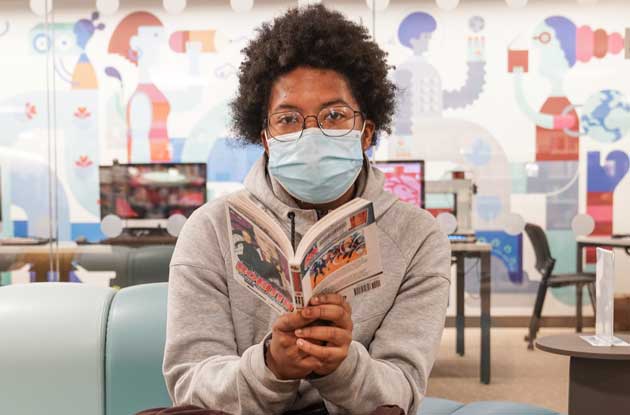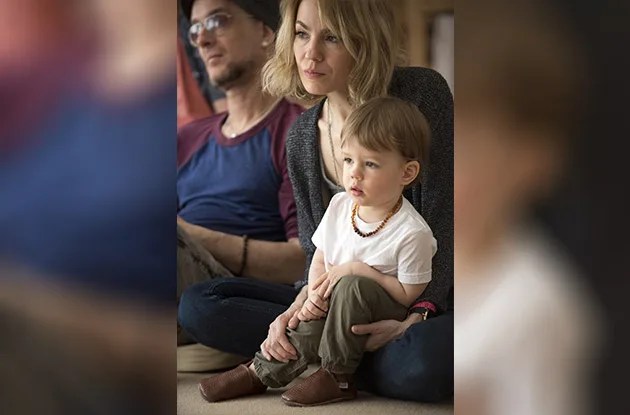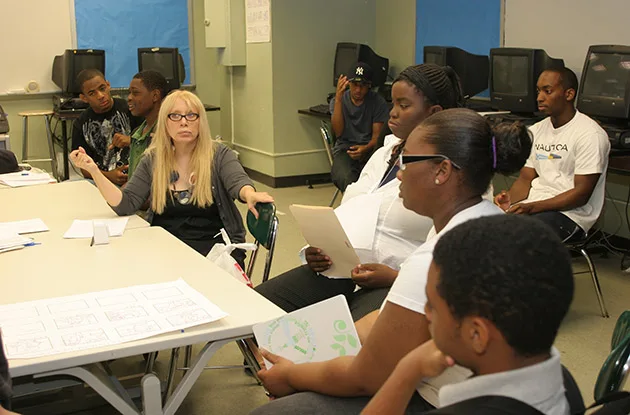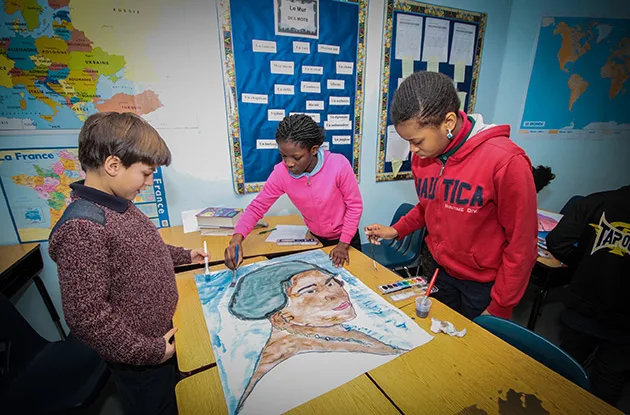New York City public school students got a behind-the-scenes look at Broadway’s “Nice Work If You Can Get It,” thanks to Inside Broadway’s Creating the Magic program, which aims to introduce kids to Broadway shows and the people behind them.
On June 13, hundreds of public school students from across NYC took their seats in Manhattan’s Imperial Theater for a behind the scenes look at one of Broadway’s leading shows. It was clear the kids knew they were in for a treat as the house lights dimmed and the screams and cheers swelled for Inside Broadway‘s Creating the Magic workshop with Nice Work If You Can Get It.
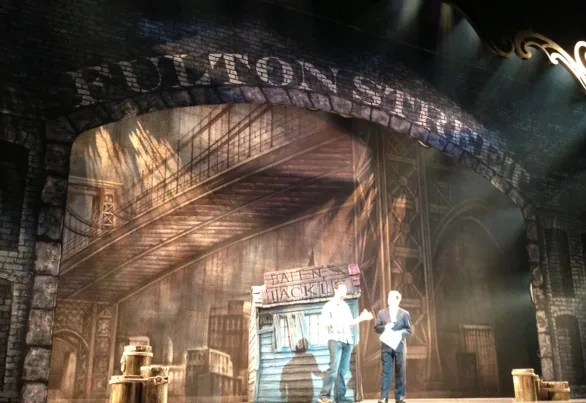 Michael Presser, executive director at Inside Broadway, a company dedicated to bringing the rich musical tradition of Broadway to younger audiences, explained that the Creating the Magic workshops, which are held two to three times a year, provide “an opportunity to show children all of the different jobs and people who are involved in producing a major Broadway musical, because students generally only think that theater is the actors on the stage. They are not aware of the fact that there is an army of people behind the scenes who are working to make it possible for the actors to be on the stage.”
Michael Presser, executive director at Inside Broadway, a company dedicated to bringing the rich musical tradition of Broadway to younger audiences, explained that the Creating the Magic workshops, which are held two to three times a year, provide “an opportunity to show children all of the different jobs and people who are involved in producing a major Broadway musical, because students generally only think that theater is the actors on the stage. They are not aware of the fact that there is an army of people behind the scenes who are working to make it possible for the actors to be on the stage.”
Presser began his presentation by explaining the historical background of the Imperial Theater and two of the most important figures in American musical theater, George and Ira Gershwin, noting that the Gershwins debuted their original musical, Oh, Kay!, at the Imperial in 1926. Presser also explained that Nice Work If You Can Get It, while not an original Gershwin production, is a pastiche that incorporates some of the brothers’ greatest tunes.
The audience then listened to Cameron Adams’ and Andrew Cao’s rendition of the title song, “Nice Work If You Can Get It.” After, Adams and Cao spoke a bit about their characters, the setting of the musical (Prohibition in the 1920s), and what they had to do to “make it” on the Great White Way.
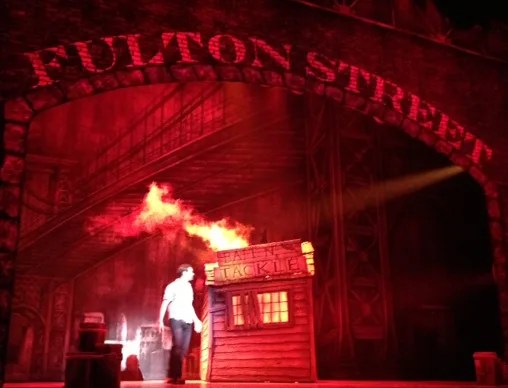 Then, Pete Donovan, Nice Work‘s electrician, showed the audience a few of the theater’s amazing lighting effects, from colorful spotlights to the scorching “flames” of his fire effect. A lively chorus of oohs, ahhs, and woahs resonated from the dazzled audience as Donovan showed off his best lighting tricks.
Then, Pete Donovan, Nice Work‘s electrician, showed the audience a few of the theater’s amazing lighting effects, from colorful spotlights to the scorching “flames” of his fire effect. A lively chorus of oohs, ahhs, and woahs resonated from the dazzled audience as Donovan showed off his best lighting tricks.
Next, the audience heard from Bonnie Becker, production stage manager, who affirmed that she has the best job on Broadway because she “gets to see the show every night!” On a typical night, Becker said, the audience will only see the 28 people who make up the cast, but there are 81 other people behind the scenes making the show possible.
Jason De Pinto then joined Adams and Cao to sing the classic “Let’s Call the Whole Thing Off,” and Heidi Brown showcased a selection of props, including a fake champagne flute and a secret staircase under the tub from the ritzy bathroom scene. Kate Elliot, the company manager, then told the audience a bit about what is involved in managing the business part of a Broadway show.
Members of the orchestra emphasized the importance of live music, and De Pinto and Adams then sang the amusing “Blah, Blah, Blah.” After, Richard Force gave a set demonstration and then the kids clapped along to Cao’s and De Pinto’s performance of “Fascinatin’ Rhythm.” John Cooper showed the capabilities of the sound system and revealed that he hides the microphones in cast members’ hair. Tom Murray, the conductor, explained a little bit about what he does, and Adams and De Pinto performed “S’Wonderful,” the final number of the workshop.
At the end, a few lucky students were given the opportunity to ask the performers questions. One student wanted to know what made Adams want to become an actor (“I just love it so much!” she quickly responded); another student asked about the length of the rehearsal process (which, according to De Pinto, takes about four weeks to learn the show in a rehearsal studio and two more weeks for the tech process in the theater); and a third student asked about stage fright (which Adams confessed even affects Broadway performers from time to time).
“This program in no way replaces the experience of coming to the theater in the evening to actually see the show because then you see everything—all of the elements working together. But here’s an opportunity to show [the kids] a little bit of what goes on at the theater and to give them a little bit of a taste of the show,” Presser said.
Presser’s aim to introduce the students to the timeless music of the Gershwin brothers was certainly a success, as the children exited the theater dancing and singing. And to quote the title song, “Who could ask for anything more?”
Inside Broadway’s programming is made possible by generous funding from the New York City Council, the New York City Department of Education, and the New York City Department of Cultural Affairs. For more information on Inside Broadway and its programs, visit insidebroadway.org.


















